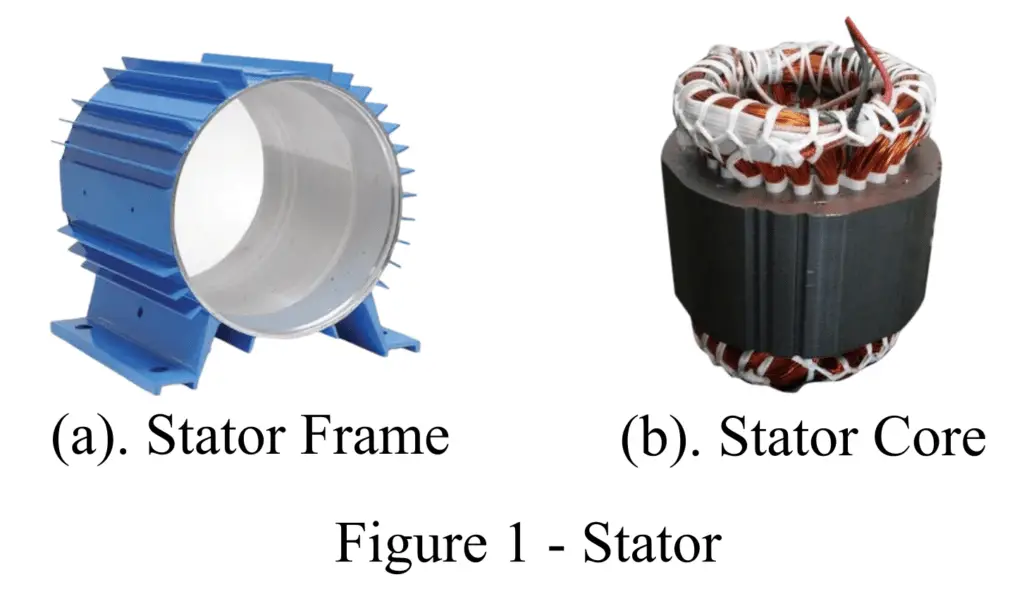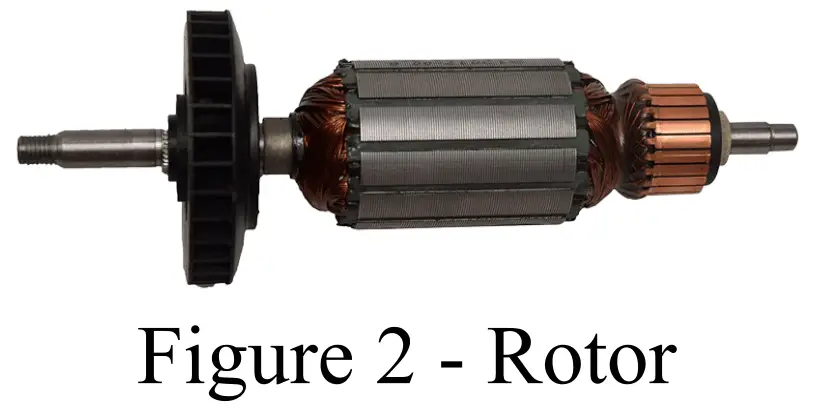In this article, we will discuss the important differences between stator and rotor in rotating electrical machines. But before going into the comparison of stator and rotor, let us first know a bit about stator and rotor individually.
As we know, every rotating electrical machine is composed of two main parts namely, the stator and the rotor. The fundamental difference between a stator and a rotor is that a stator is a stationary part of the machine that does not make movement, while the rotor is a rotating part that makes movement when an electromagnetic torque acts on it.
What is Stator?

In rotating electrical machines, a stator is a static or stationary part of the machine which does not make any movement. In a typical electrical machine, the stator is generally an outer part of the machine that forms the outer frame and magnetic circuit of the machine. The stator of a machine is generally made of cast iron. The stator keeps a laminated stator core inside it which has slots cut on its inner periphery to place stator windings.
The primary functions of the stator are to produce a working magnetic field in the machine and provide an outer mechanical cover to the internal parts of the machine.
What is Rotor?

The rotor is a moving or rotating part of the electrical machine. The rotor contains a rotor core and a rotor winding. The rotor core is made up of thin laminations of sheet steel and has slots cut on its outer periphery. The rotor windings are placed in these slots. When the current flows through rotor windings, the magnetic field produced will interact with the stator magnetic field that produces an electromagnetic torque on the rotor. Due to the action of this torque, the rotor starts rotating.
Also, the rotating machine is an electric generator, the rotor has to be rotated by means of some external prime mover. This rotation of the rotor induces EMF in the stator winding of the machine.
Therefore, after getting enough knowledge about stator and rotor. We are now able to understand the differences between them.
Difference between Stator and Rotor
The key differences between the stator and rotor in an electrical machine are listed in the following table.
| Key | Stator | Rotor |
| Definition | The stationary or static part of the rotating electrical machine is referred to as its stator. | The movable or rotating part of the electrical machine is called its rotor. |
| Movement | The stator is a motionless part of the machine and does not move at all. | The rotor is a part that is free to move and rotates inside the machine. |
| Position | The stator is generally an outer part of the machine. | The rotor is usually an internal part of the machine. |
| Major sub-parts | The main parts of the stator are the stator frame, stator core, and stator winding. | The main parts of the rotor are the rotor shaft, rotor core, and rotor winding. |
| Insulation level | The stator requires heavy insulation. | The rotor requires less insulation compared to the stator. |
| Nature of current | Stator winding can carry alternating current (AC) or direct current (DC). | Rotor winding always carries alternating current (AC). |
| Mechanical losses | Mechanical losses in the case of a stator are less because it does not move. | The rotor has high mechanical losses as it is a moving part. |
| Total losses | For stator, total losses are less as it has only electrical losses and no mechanical losses. | For the rotor, total losses are high as it suffers from both mechanical as well as electrical losses. |
| Physical size | The stator is larger in size as it provides housing to the entire machine assembly. | The rotor is of smaller size. |
| Cooling | As the stator is an outer part, hence its cooling system is better, easy to maintain, and less expensive. | As the rotor is the internal part of the machine its cooling system is complex, less efficient, and relatively expensive. |
| Significance | Stator serves as an intermediary between electrical and mechanical systems. | Rotor servers as an electrical to mechanical energy converter. |
Conclusion
Hence, this is all about the important differences between stator and rotor in electrical machines. Both stator and rotor together make an electrical machine complete and thus are crucial parts. However, they are absolutely different from each other as described in the above table. From this comparison, we may state the most significant difference between the stator and rotor which is, the stator is a stationary part that acts as an outer frame of the machine. In contrast, the rotor is a moving part that acts as a functional component of the machine.
Read Next: